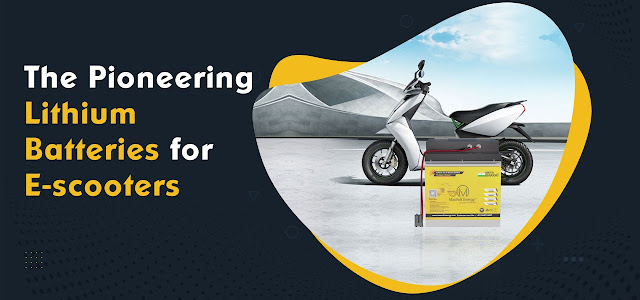How Can You Extend the Life of Lithium-Ion Batteries?
When you invest in lithium-ion batteries, you are buying batteries with lifespans that are ten times longer than those of lead-acid batteries. To maximize the return on your lithium investment, you want your battery life to be as long as possible.
There is a better justification for the widespread adoption of rechargeable Li-ion and Li-ion-polymer batteries. Lithium-ion batteries for e-scooters are easy to charge and maintain, have a long lifespan, and offer superior environmental benefits compared to other rechargeable batteries. They also have a better energy density, a higher cell voltage, a lower self-discharge rate, and a longer cycle life. Also, many portable items can run on a single cell because their voltage is high (2.9 V to 4.2 V). It might make it easier to design a product as a whole.
Depending on the application, there can be disagreement about which battery attribute is the most significant. There is so much emphasis on increasing Li-ion battery capacity to deliver the maximum runtime in the smallest possible package. In some cases, a longer battery life, more charge cycles, or a safer battery are more important than a larger capacity.
Let's go over the specs of the Li-ion battery before we get into how the charger helps it last longer. One of the most reactive metals with the most extensive electrochemical potential, lithium is also one of the lightest metals, making it a perfect candidate for use in batteries. Li-ion batteries do not contain metallic lithium. A battery's cathode and anode exchange electrons as it charges and discharges.
Read our top four lithium-ion battery maintenance tips.
Avoid extreme temperatures: If your phone feels hot when charging, remove it. Similarly, do not put it in cold temperatures. Extreme temperatures "may exacerbate the deterioration of nearly every battery component." Some electric vehicle manufacturers advise leaving the vehicle plugged in on hot days so the battery cooling system can operate. As a general rule, try not to charge if the temperature is between 50 to 95 degrees Fahrenheit (10 to 35 degrees Celsius).
Batteries detest being overcharged or undercharged: To prevent premature wear and tear on your lithium-ion batteries, you should never charge them to more than 80% or discharge them to less than 20%. If you need extra battery life, charge the battery, but disconnect it from the charger as soon as it reaches 100%. So, it's not a good idea to leave phones or other devices plugged in overnight or to charge batteries you rarely use.
Avoid fast charging and discharging: While fast charging may seem like a good idea, it causes the battery to overheat and wear out more quickly than a gradual trickle charge. Additionally, high discharge rates are detrimental to your battery's health and will shorten its lifespan. It includes power-hungry applications and full-throttle action in the automobile industry. Instead of using a fast charger, it is preferable to use a slow 1A charger for your phone if you can find one.
When storing, use caution: When it comes to the battery life of any device, proper storage is crucial. For optimal battery performance and longevity, keep the device out of direct sunlight and freezing temperatures. If you are not using your lithium-ion battery, keep it at around 20 degrees Celsius (68 degrees Fahrenheit). A bad storage environment can cause component damage and shorter battery life.
Speak with the experts at Maxvolt, one of the best lithium- battery manufacturers, today! They can explain the science of lithium-ion battery maintenance and more. Ensure that devices are always ready to go by managing your power requirements.
.jpg)
.jpg)


.jpg)
Comments
Post a Comment